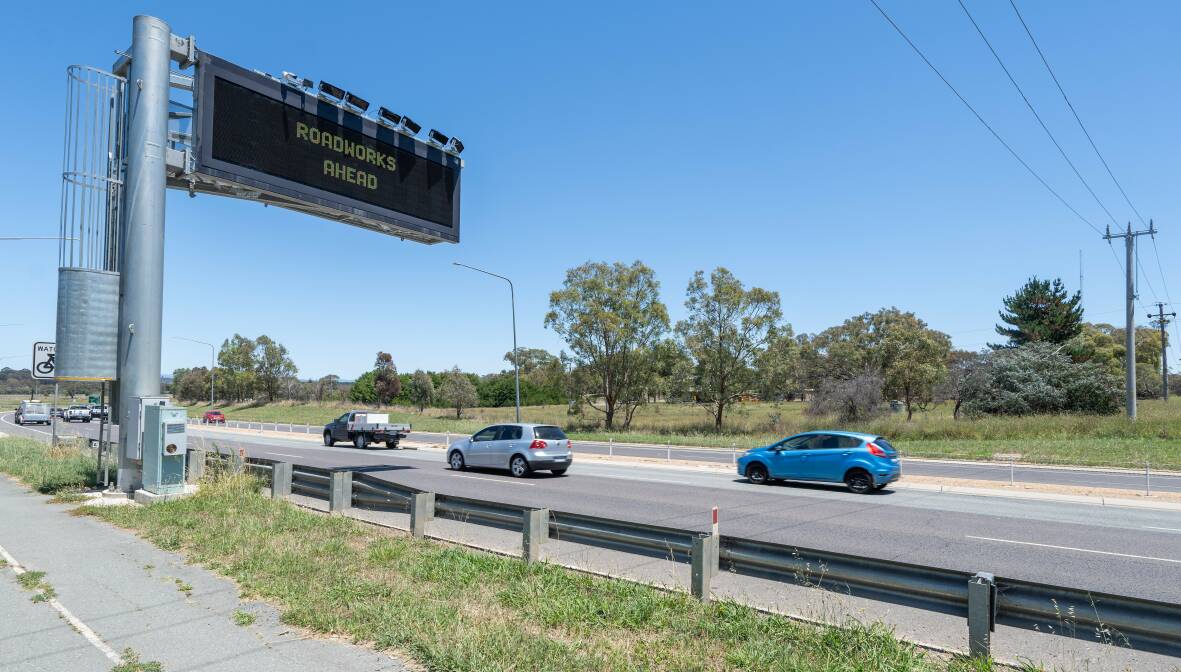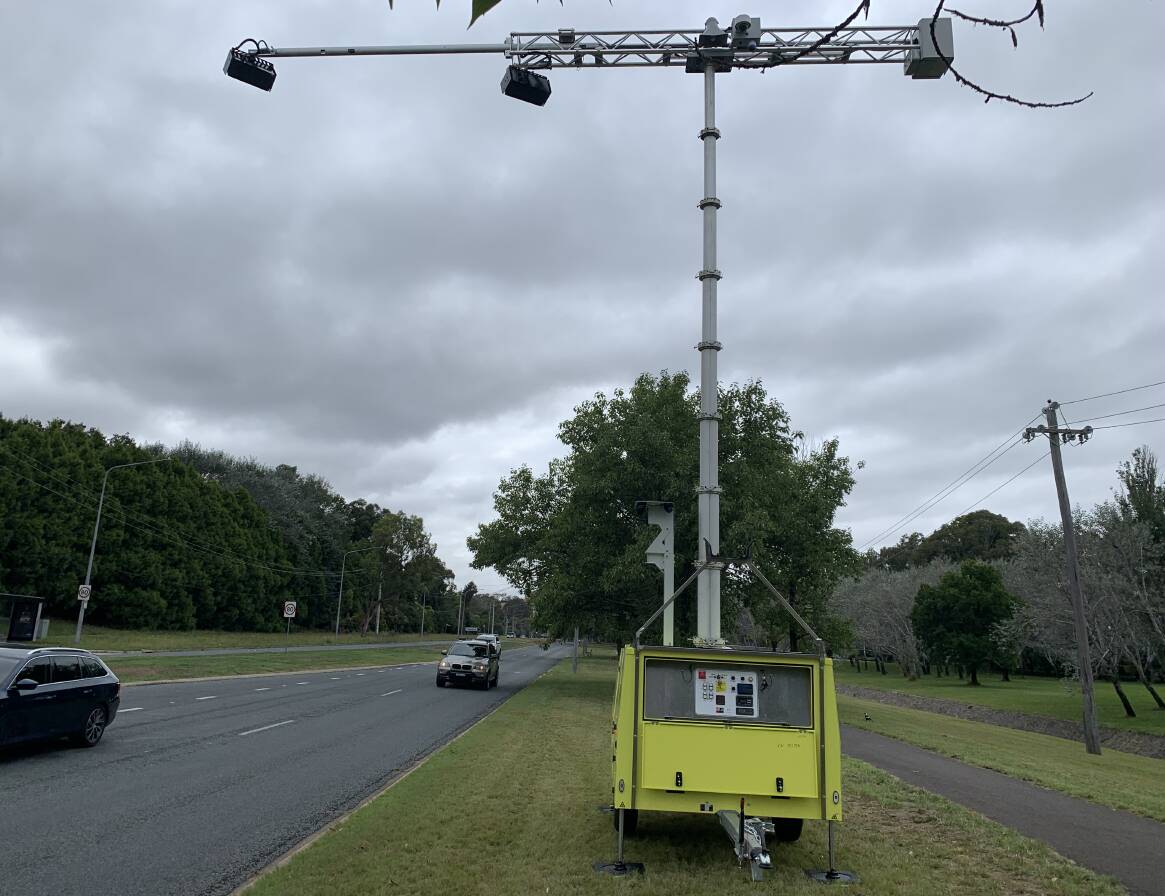Canberra's two "hidden" mobile phone detection cameras are revealing the true nature of this dangerous driving offence in the ACT, recording an average of more than 330 offences every day.
The fixed cameras mounted on the overhead billboard gantries over Hindmarsh Drive at Symonston and Gungahlin Drive, Gungahlin have detected more than 4400 drivers using a mobile device since the warning phase or "grace period" started just over four weeks ago.
The fixed gantry cameras are the only ones which are not obvious to drivers.
The three others are on large transportable trailers parked on the verge, are painted in flourescent yellow and have a telescopic gantry system which hangs out over the roadway.
An ACT government spokesperson said that the high number of detections "once again highlights the significant road safety issue we are currently facing".
Over 6800 Canberrans have received letters since the warning phase of the program began on November 3. Drivers will start to receive infringement notices, carrying fines and demerit points, in February.
From then on, any motorists caught using their mobile phone illegally will be fined $498 and penalised three demerit points.

While the new gantry camera on Gungahlin Drive only came online on November 25, total detections per month across the ACT shot up from 5536 in October to a new territory high of 7044.
The Gungahlin Drive location now is detecting an average of 230 infringements a day and Hindmarsh Drive, which has been in place for longer, an average of 102 per day. Both are capturing errant motorists faster than the transportable cameras.
The latest detection data is troubling for the government, as driver perception has not shifted despite numerous warnings that the technology is coming, and tough penalties will arrive in the new year.
"We are asking motorists to leave their phone alone," an ACT spokesperson said.

"Now is the time to change bad habits, put your phone down and prioritise getting yourself and all road users home safely."
Since the camera trial program began in February, more than 48,000 Canberrans have been detected using their mobile device, equating to almost 170 people being detected daily.
In July this year, detections were averaging 100 per day.
The $7 million program uses the Australian-developed Acusensus special all-weather imaging system which can capture photos in adverse conditions, such as against a rising or setting sun, and even in light rain or mist.

Detections are defined as when the camera's AI identifies a device held in the hand, in the lap of the driver, or in some way used by the driver (such as pinned by a shoulder to the ear). Under traffic laws, any such devices used in a car must be secured within a phone holder or cradle and not touched by the driver.







